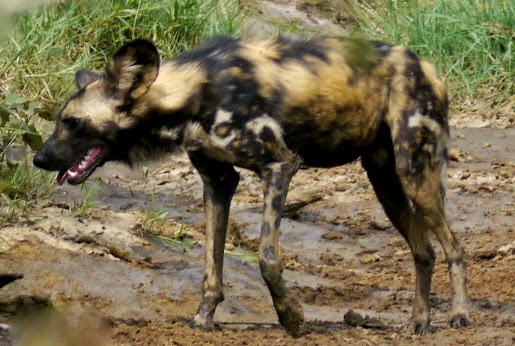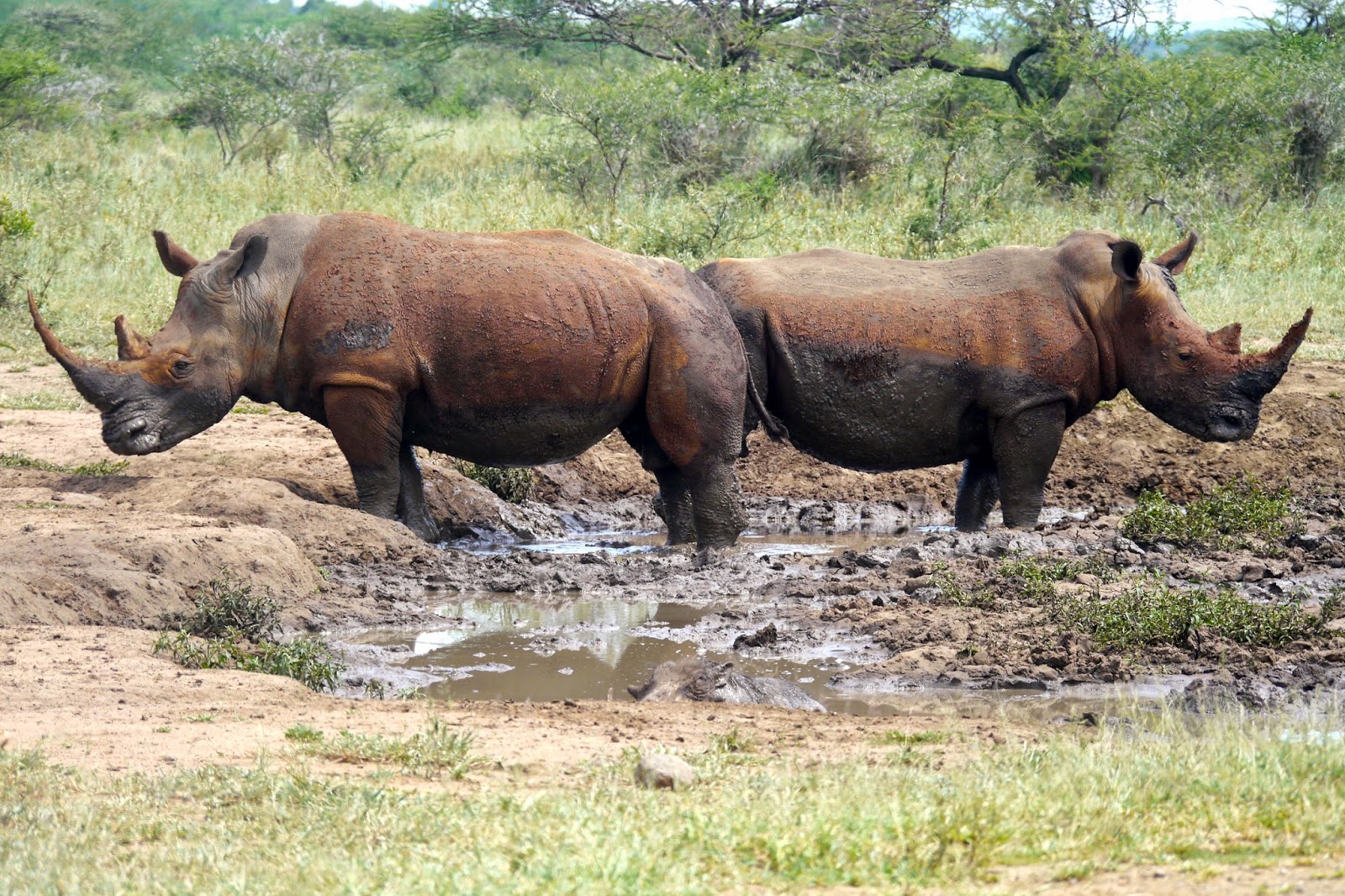
Game Drive in Hluhluwe Imfolozi: A South African Rhino Safari
For most Americans, the holiday season conjures images of tree decorating, gift-giving and wintry weather. It is difficult for many of us to imagine Christmas without also thinking of snowflakes, sleigh bells and a yearly visitor from the North Pole. And, though I remember very few years in which we actually had a white Christmas in Oregon growing up, the cold winter weather did not make it difficult to imagine a snowy wonderland outside.
It rarely occurred to me that, for those, living South of the equator, Christmas and snowflakes do not necessarily go hand in hand.
Until 2013, when Dan and I spent the holiday season in South Africa and our notion of Christmas was flipped upside down.
Once we learned that we would be spending the 2013 holiday season in South Africa, Dan and I figured we might as well spend it in the sun at a beach–since finding a winter wonderland nearby seemed an unlikely possibility. Besides, I was excited to fully immerse myself in the Christmas experience of those hailing from the southern hemisphere.
So, on Christmas day, Dan and I ventured toward a beach near the iSimangaliso Wetland Park in St Lucia and prepared for a day of soaking up Vitamin D in the warmth of the African sun.
But Christmas decided to throw a curveball our way.
Shortly after we arrived at the beach, we locked our keys in the car. And thus began a day-long process of finding a locksmith in the area that would actually be open on Christmas Day. Finally, with the help of police officers, we found a locksmith in Richards Bay–a city more than 150km away. We took a seat outside of the police station, twiddled our thumbs and waiting for the locksmith to arrive.
Despite the lack of cold weather and holiday cheer, it was hardly the Christmas we’d imagined.
***
Hluhluwe Imfolozi: The Best Place to See Rhinos in the Wild
Perhaps our South African Christmas didn’t go exactly as planned, but spending December 26th at Hluhluwe-Imfolozi National Park more than made up for our misadventures the previous day. Hluhluwe Imfolozi is the oldest nature reserve in Africa and spreads for nearly 1,000 square kilometers over the hilly, lush terrain of Kwazulu-Natal. The wildlife reserve is known for its remarkable rhino conservation efforts.
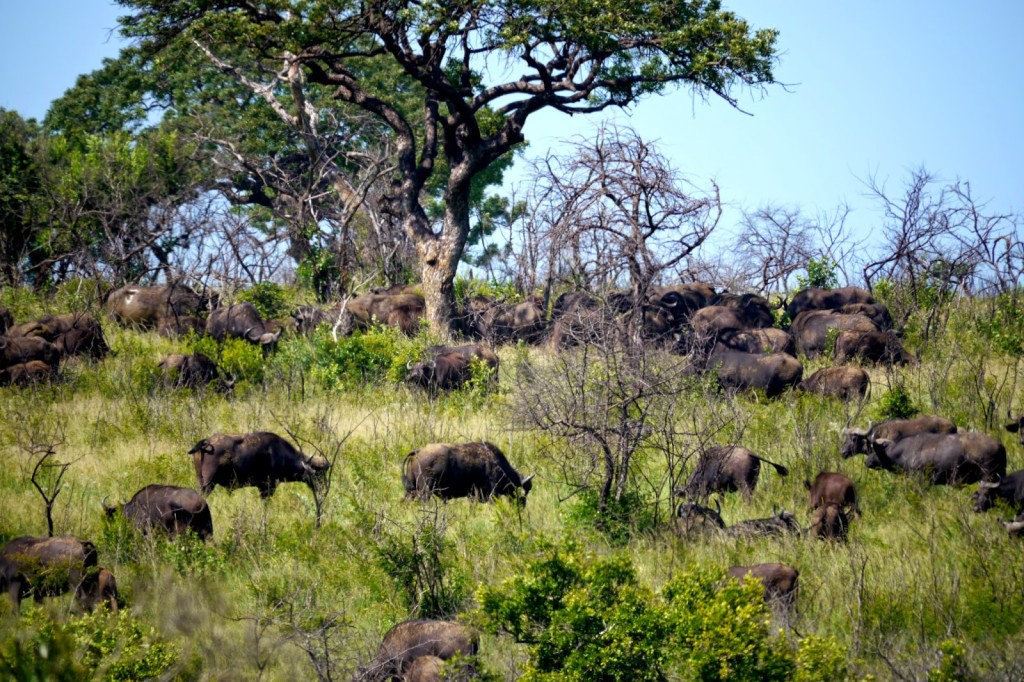
If we had come to South Africa and only visited Hluhluwe-Imfolozi National Park, it would have probably been difficult for us to understand the country’s dire rhino poaching problems. The park is chock-full of these beautiful animals.
In the early 1900s, Hluhluwe-Imfolozi spearheaded a preservation campaign that is largely responsible for bringing the white rhinos back from the brink of extinction.
Yet, rhino poaching is still a major problem in South Africa. Every year, poaching claims the lives of hundreds of animals whose horns are sold in Asia for medicinal purposes. Though rhino poaching is illegal, the demand for rhino horns is so great that selling them in the black market remains a lucrative business.
Hluhluwe Imfolozi has not entirely escaped poachers, but the park still boasts the highest concentration of rhinos in the world. It is the best place to see rhinos in the wild and a safari in Hluhluwe Imfolozi will undoubtedly result in numerous rhino encounters.
During our Hluhluwe Imfolozi safari, we encountered upwards of forty rhinos.
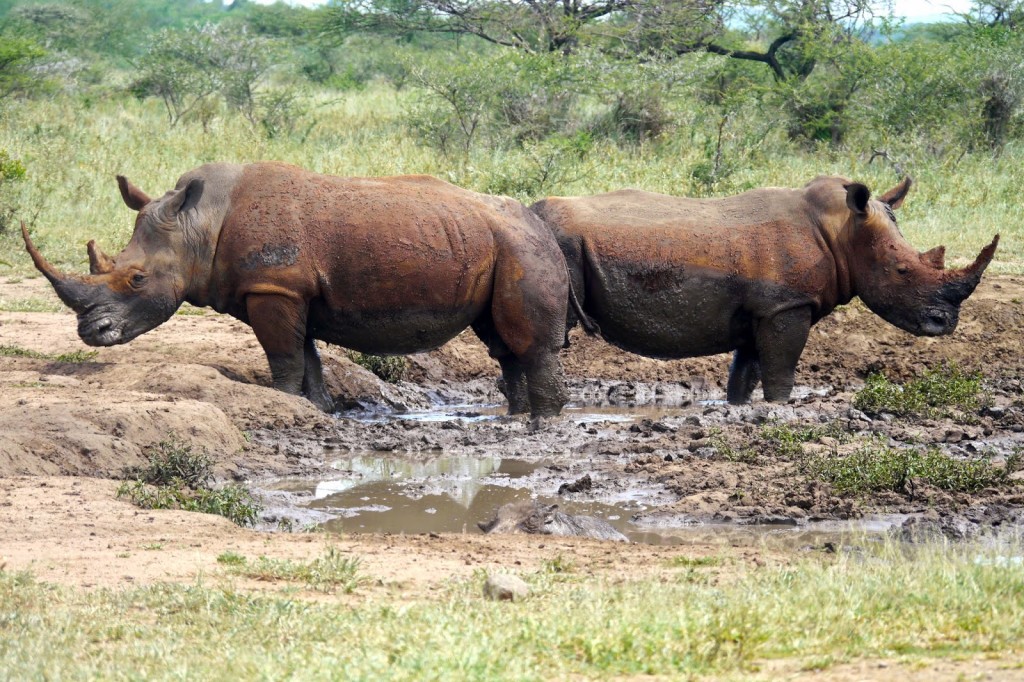
Other Animals in Hluhluwe Imfolozi
Although the park is known for its robust rhino population, many other animals find a home in Hluhluwe-Imfolozi as well. The game reserve houses Africa’s Big 5 as well as a diverse array of small predators, herbivores and birds. Throughout our self-guided game drive, we had many wonderful wildlife encounters, despite the thick foliage and tall grasses of the rainy season.
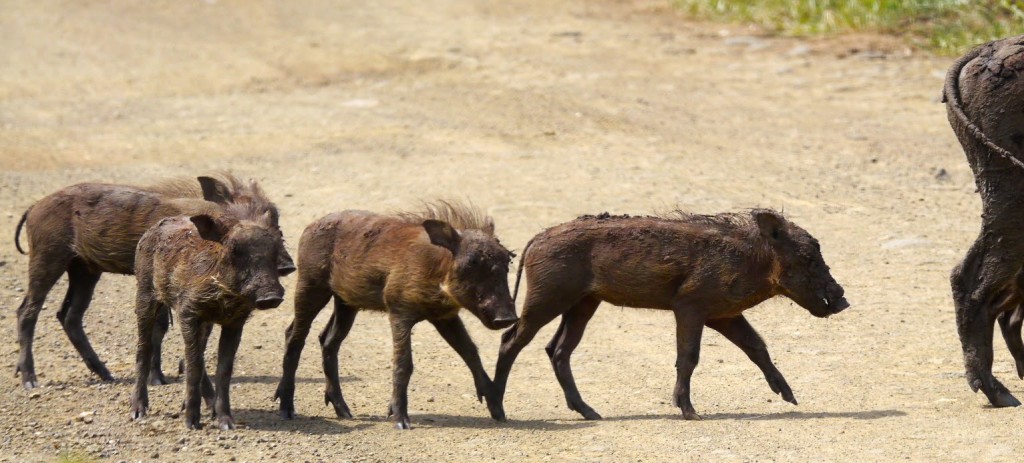
Our most prized animal sighting came toward the end of our drive, while Dan and I were finishing our loop of the park. We were meandering along one of the park’s smaller roads when, all of a sudden, we encountered a line of cars stopped near a dry riverbed.
Dan and I rolled down our windows and craned our necks to see what was going on, but found nothing except for grasses and shrubs. We asked the passengers in the stopped car in front of us, but the driver merely shrugged and pointed at the other cars, suggesting they knew something he did not. When the cars lined up in front finally continued on their way, we pulled up into their places and scanned our surroundings.
And then we saw the prize. Sitting under a tree in the distance was a pack of rare painted dogs, whose patchy brown and black fur camouflaged perfectly into the surrounding area.
The dogs were far away and I had to sit on the car’s window ledge to see them. I took out my camera and screwed on the 300mm zoom lens to try to capture an image of the animals.
Though the quality of the image is compromised due to the extended zoom and significant cropping, I am happy that we were able to at least capture a photo during our safari in Hluhluwe Imfolozi.
Seeing the dogs was a belated Christmas gift that nearly made us forget our misadventures the previous day.
It rounded out an incredible week of wildlife sightings and was a great finale to our whirlwind three-week tour of South Africa.
***
Note: To read more about the endangered painted dogs, check out Carol’s article about the poaching and conservation of painted dogs in Zimbabwe’s Hwange National Park.

